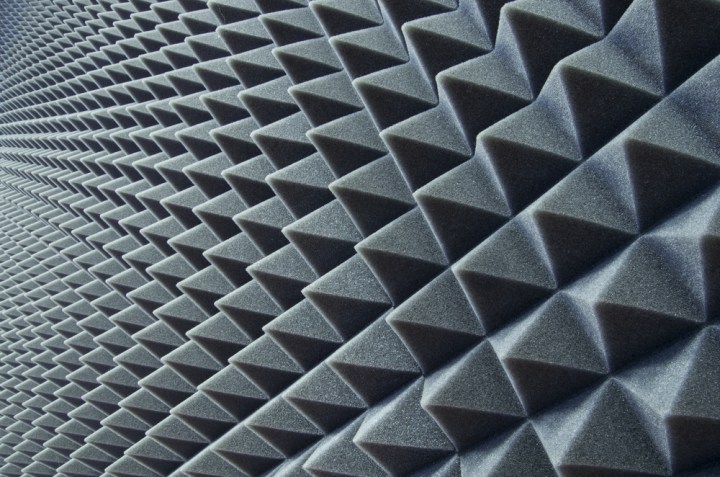
Most sound removal systems rely on a sound absorption material that absorbs sound waves at a specific wavelength. Different materials that absorb sound at different wavelengths are used in different situations, depending on the sound they are trying to absorb. For complex sound situations, some materials are combined into a composite that can absorb sound at a range of wavelengths, but even this gradient index material has its limitations. It’s not practical to build a multi-layer matrix capable of absorbing all wavelengths of sound. This absorption approach also only dampens the sound as some of the acoustic waves are not absorbed and bounce off the material.
The Hong Kong University team took a different approach to sound removal, instead of absorbing sound they used a system that cancels out all the acoustic waves in the environment. The system uses a pair of impedance matched resonators that work in tandem to deaden all sound in a room.
The first resonator removes the majority of the incoming sound waves, but even the best resonator is not perfect with some sound waves still scattering back into the room. The second resonator picks up where the first resonator left off. It is tuned to the same frequency as the first resonator, allowing it to use destructive interference to cancel out the small amount of sound that is escaping the first resonator. The system achieves near perfect absorption with the removal of up to 99.7 percent of the sound waves.
This latest research was built upon an earlier study by the group that was published last year in Nature. The group previously used impedance matched resonance to remove sound, but relied on a multi-layer system with a layer of air and a secondary reflective surface. This new system removes the extra layers and achieves near perfect sound absorption in a single layer system.




